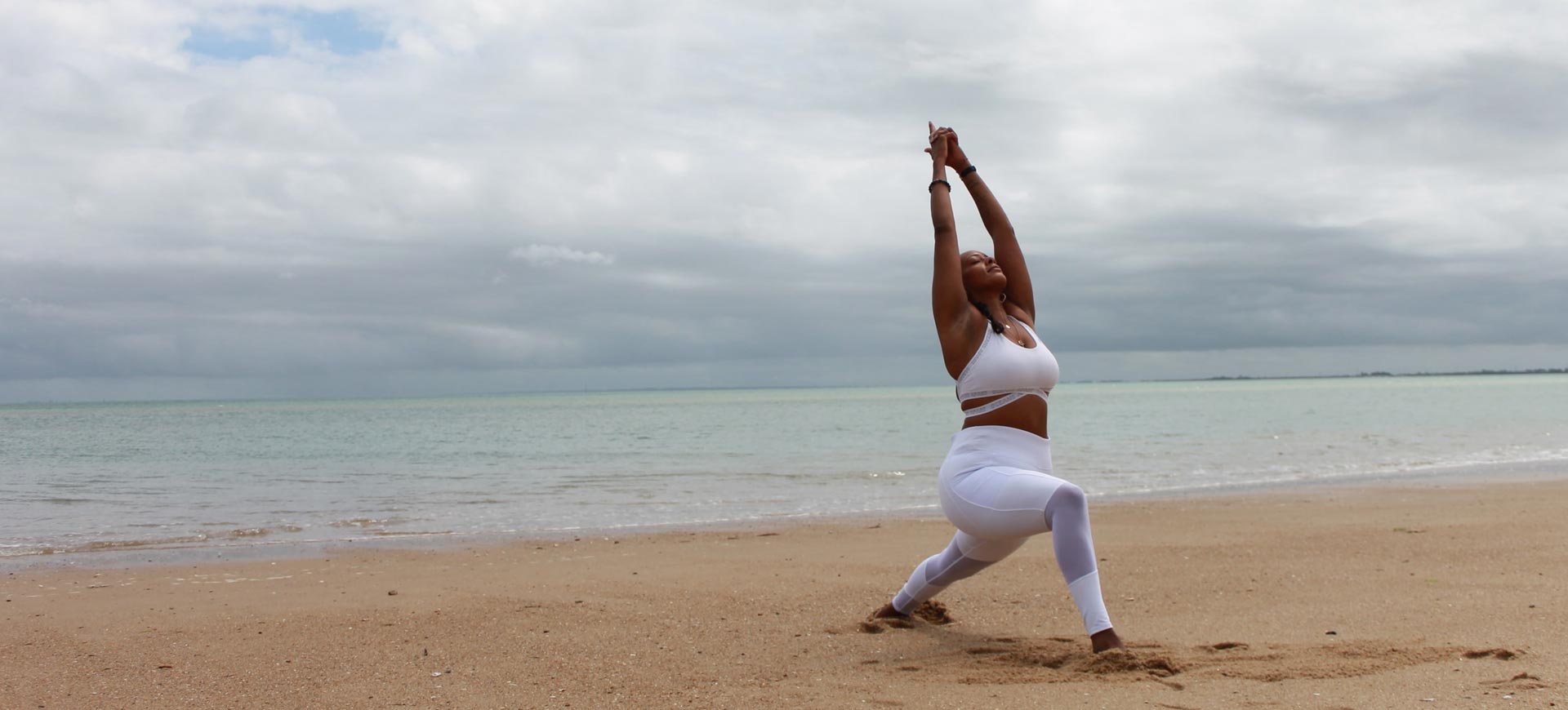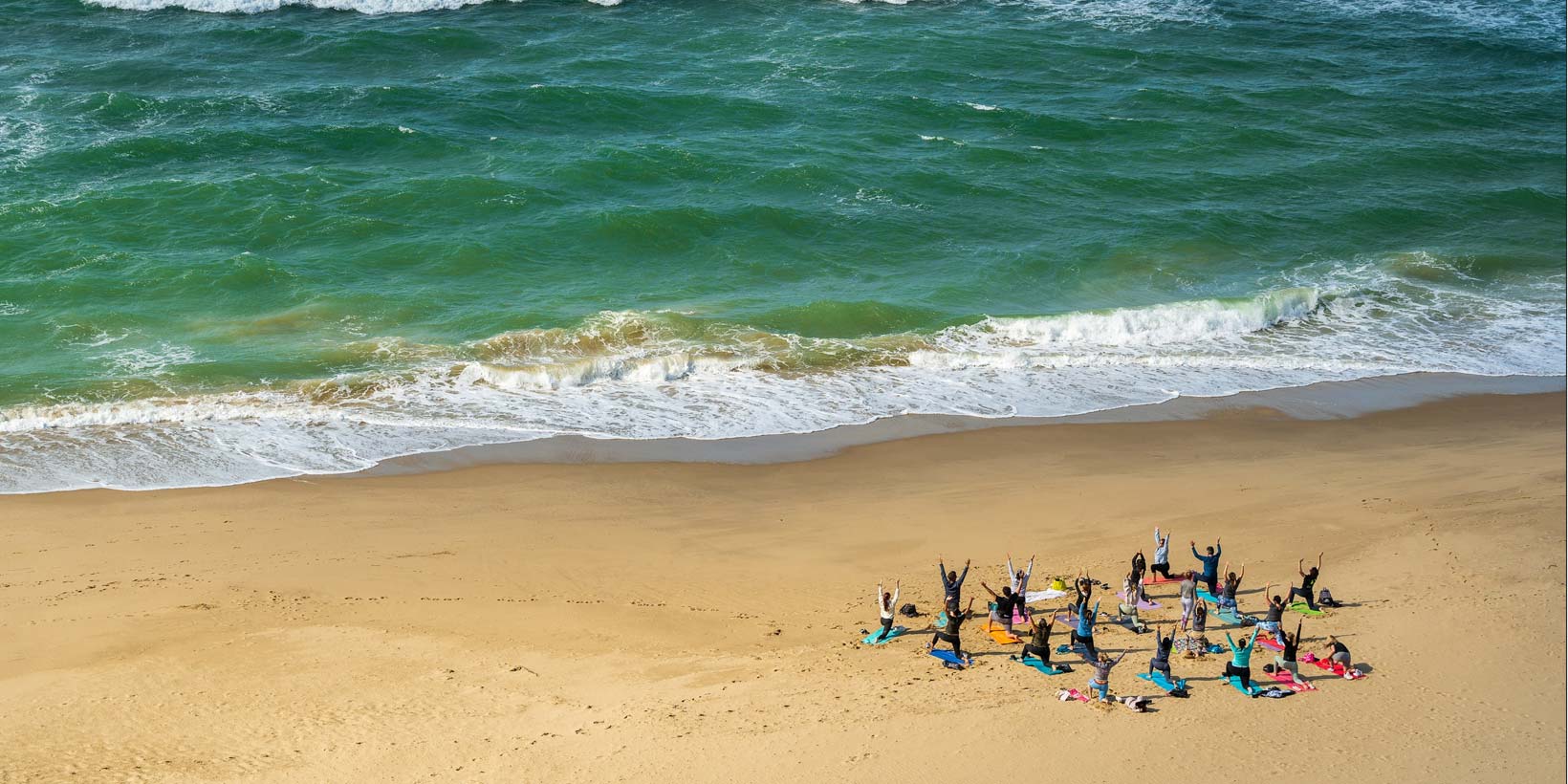
Make the Most of the Sun: Teaching Ideas for Outdoor Yoga
It may not be a normal summer, but summer it is all the same. And as we enter into the last few weeks of the sunny season, why not make the most of the time to teach and practice yoga outdoors?
That being said, outdoor yoga does present a few unique challenges.
This year, outside classes come with an added benefit — reduced concern about the transmission of Covid-19, because you’re outside in the fresh air with more space to implement good social distancing measures.
That being said, outdoor yoga does present a few unique challenges. Unless you have access to solid decking in a big private garden, the chances are you’ll be teaching on uneven grassy ground in a park or other public place, with lots of distractions (and always the possibility of rain).
Here are a few tips to help you and your yogis make the most of the last days of summer.
Problem: You’re teaching in a public place, so there are lots of people and other distractions around
A group of people walk by, fixing their gaze on the people practising yoga in the park, exchanging comments. A dog chases a ball and runs at speed right through the middle of your group. Kids shout nearby. Clouds roll over, or a breeze starts to blow.
Outdoor yoga can be a beautiful experience, surrounded by nature — but it can be fraught with distractions too.
What to do?
Instead of trying to pretend none of it’s happening, acknowledge the distractions. If something happens that clearly pulls the group’s attention away from their practice, mention it.
A simple, lighthearted “I bet they wish they could hold plank as long as you” when passers-by seem particularly interested in what you’re up to; or “Ahh, the magic of nature!” when the wind blows a student’s socks away, can take the power away from the distraction and refocus awareness.
 Problem: The ground is grassy and/or uneven and/or hard
Problem: The ground is grassy and/or uneven and/or hard
Yoga studios often have comfortable, clean, sprung floors. Parks, gardens and fields? Not so much. Uneven ground can feel uncomfortable to yogis, and make certain postures more difficult.
What to do?
Adapt to the terrain. If the ground is uneven, for example, you could weave it into the practice by focusing on balance and actively using the extra challenge, rather than ignoring it. If you know the ground’s going to be hard, encourage yogis to bring along a blanket — or even an extra mat if they have one — so you can add padding under the joints when needed.
As a teacher, the best thing you can do is have an idea of the terrain ahead of time. Visit the class location beforehand so you can let students know if any extra props or clothes would be helpful.
Problem: It might rain, or be too windy, or too hot…
No matter how closely you study the forecast, the weather could always surprise you. And certain conditions do make an outdoor yoga class an unpleasant — or impossible — experience.
What to do?
Have an alternative plan. If you’re set up to teach online, as many of us are now that the global pandemic has pushed much of our work into the virtual realm, then tell your class attendees that if the weather changes the class will be held online instead.
Then update everyone a couple of hours before the class to confirm whether or not it will go ahead outdoors. That way you don’t have to cancel — and no one will be left sitting alone in the rain, wondering where their yoga teacher is.
Problem: Holding space is hard when there aren’t any walls
This is related to outside distractions, but it goes a little deeper. Part of a yoga teacher’s job is to ‘hold space’; a skill that’s hard to describe, but essentially means creating and maintaining the vibe of the class so students feel calm, focused, supported, and able to connect inwards. Doing that in a big open space, without walls to define the physical edges of the space you’re holding, can be much harder.
What to do?
Ground yourself. Holding space starts with you, so make sure you give yourself time to get yourself in the right headspace for the class. Take a moment to meditate, do a little practice yourself, or stick to a regular pre-class ritual.
Take a moment to meditate, do a little practice yourself, or stick to a regular pre-class ritual.
And then once the class is in flow, keep returning to that centre. Keep your breath steady, keep your awareness on the class (if you’re distracted, they will be too), and use your body to move around the class space in a way that sets it apart from the space beyond.
Outdoor yoga can be a truly uplifting experience. Adapt to the challenges it brings, and get the most out of the sunshine before autumn rolls in.






